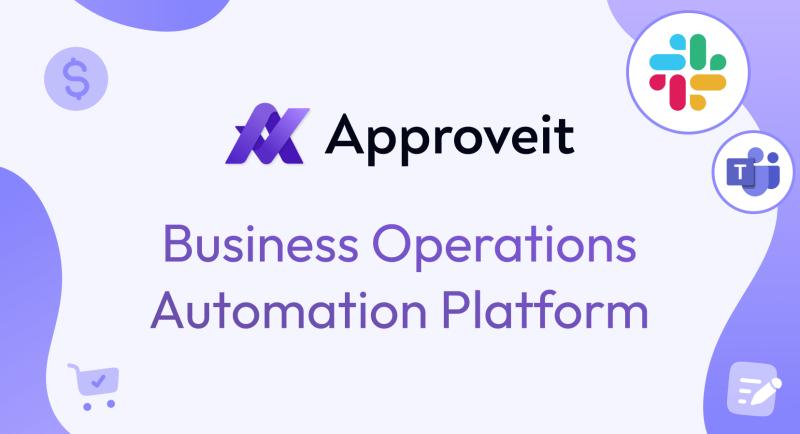Streamlining Business Processes The Role of Integration Workflow Software

Integration Workflow Software: Transforming Business Efficiency
In today’s fast-paced business environment, organizations need to streamline their operations and enhance collaboration to remain competitive. One of the most effective tools for achieving this is integration workflow software https://approveit.today/integrations. This software enables businesses to integrate various processes, automate workflows, and improve overall productivity. In this article, we will explore the significance of integration workflow software in modern enterprises, discuss its features, and provide insights into choosing the right solution for your organization.
Understanding Integration Workflow Software
Integration workflow software serves as a bridge between disparate systems and applications in an organization. It allows for seamless communication and data exchange across multiple platforms, facilitating the automation of various tasks. By using this software, businesses can eliminate manual processes, reduce errors, and save time.
Key Features of Integration Workflow Software
When considering integration workflow software, there are several key features to look for:
- Process Automation: Automate repetitive tasks and processes to increase efficiency and reduce the risk of human error.
- Real-Time Data Integration: Synchronize data across various applications in real-time to ensure that all departments have access to the most current information.
- User-Friendly Interface: A simple and intuitive interface is crucial for user adoption and ease of use.
- Customizable Workflows: The ability to tailor workflows to meet specific business needs allows organizations to create processes that work best for them.
- Reporting and Analytics: Provide insights into workflow performance and highlight areas for improvement through data-driven analysis.
The Benefits of Integration Workflow Software
Implementing integration workflow software can yield numerous benefits for organizations, including:
1. Improved Efficiency
By automating routine tasks and simplifying processes, integration workflow software significantly boosts operational efficiency. Employees can focus on higher-value tasks, which can lead to better outcomes and increased productivity.
2. Enhanced Collaboration
Integration workflow software fosters collaboration by ensuring that all team members have access to the same information. This transparency encourages teamwork and facilitates better communication across departments.
3. Reduced Errors
Manual data entry and repetitive tasks are prone to errors. Automation minimizes the risk of mistakes, ensuring that data is accurate and reliable.

4. Cost Savings
By streamlining processes and reducing the time spent on manual tasks, organizations can lower operational costs. These savings can be redirected into growth initiatives and innovation efforts.
5. Scalability
As businesses grow, their processes become more complex. Integration workflow software is designed to scale with the organization, accommodating changing needs and expanding operations without significant disruptions.
Choosing the Right Integration Workflow Software
With numerous integration workflow software options on the market, choosing the right one can be challenging. Here are some factors to consider:
1. Assess Your Needs
Identify the specific needs of your organization. Consider the processes that require automation and the existing systems that need integration. Understanding your requirements will guide you in selecting a solution that fits your business.
2. Evaluate Compatibility
Ensure that the software is compatible with your existing systems and applications. A solution that integrates easily with your current technology stack will provide a seamless experience.
3. Look for Flexibility
Different organizations have different workflows. Opt for software that allows for customization so that you can tailor it to your specific processes and requirements.
4. Consider User Experience
The success of any software implementation heavily relies on user adoption. Choose a solution with a user-friendly interface that requires minimal training.
5. Review Support Options
Look for a vendor that provides comprehensive support, including training, documentation, and customer service. Proper support can drastically improve your organization’s ability to utilize the software effectively.
Implementing Integration Workflow Software: Best Practices

Successful implementation requires careful planning and execution. Here are some best practices to keep in mind:
1. Involve Stakeholders
Engage key stakeholders from various departments early in the process. Their insights will ensure that the software meets the needs of all users.
2. Start Small
Consider implementing the software in phases, starting with a single process. This approach allows for easier troubleshooting and adjustments before a full-scale rollout.
3. Monitor Performance
After implementation, continuously monitor the software’s performance. Gather feedback from users to identify areas for improvement and make adjustments as necessary.
Future Trends in Integration Workflow Software
The landscape of integration workflow software is ever-evolving. Emerging trends to watch include:
1. Artificial Intelligence
AI is increasingly being integrated into workflow software, enabling predictive analytics and smarter decision-making processes.
2. Low-Code/No-Code Solutions
These platforms allow non-technical users to create and modify workflows, expanding access and adaptability.
3. Increased Focus on Security
As data breaches become more common, vendors are prioritizing security features to protect sensitive information and ensure compliance with regulations.
Conclusion
Integration workflow software is a powerful tool that can transform how organizations operate. By streamlining processes, enhancing collaboration, and reducing errors, businesses can significantly improve their efficiency and productivity levels. As technology continues to advance, embracing these tools will be crucial for staying competitive in the marketplace. By carefully selecting the right software and following best practices for implementation, organizations can unlock the full potential of their workflows and drive long-term success.